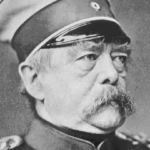The National Rifle Association (NRA) was founded in 1871 by Union veterans Col. William C. Church and Gen. George Wingate, who were dismayed by the lack of marksmanship shown by their troops. The primary goal of the association was to “promote and encourage rifle shooting on a scientific basis.”
The NRA’s early years focused on developing marksmanship skills, with the establishment of the Creedmoor range on Long Island in 1872. The range hosted the first annual matches and became a hub for competitive shooting. However, due to political opposition, the NRA was forced to relocate its range to Sea Girt, New Jersey in 1892.
Throughout its history, the NRA has expanded its scope to include various programs and initiatives. Some notable examples include:
- Youth Programs: The NRA began promoting shooting sports among young Americans in 1903, with the establishment of rifle clubs at colleges, universities, and military academies. Today, over 1 million youth participate in NRA shooting sports events and affiliated programs.
- Hunter Education: In 1949, the NRA launched the first hunter education program in conjunction with the state of New York. This initiative has since been adopted by state fish and game departments across the country and Canada.
- Law Enforcement Training: The NRA introduced its Police Firearms Instructor certification program in 1960 and has since become the only national trainer of law enforcement officers.
- Firearms Education: The NRA offers various courses, including basic rifle, pistol, shotgun, and personal protection, with over 125,000 certified instructors training approximately 1 million gun owners annually.

The NRA has also been involved in various advocacy efforts, including the establishment of the Institute for Legislative Action (ILA) in 1975 to defend the Second Amendment. Today, the NRA is recognized as a major political force and a leading advocate for gun rights in the United States.
A Brief History of the NRA
The National Rifle Association (NRA) has a long and complex history, with various factors contributing to its rise to power and influence. Here are some key events and strategies that helped the NRA take and retain power:

- Early focus on marksmanship and shooting sports: The NRA’s initial focus on promoting marksmanship and shooting sports helped establish a strong foundation and loyal membership base.
- Expansion into firearms education and training: The NRA’s expansion into firearms education and training programs, such as hunter safety courses and firearms instructor certification, helped to further establish the organization’s credibility and expertise.
- Effective lobbying and advocacy: The NRA’s lobbying efforts, particularly through the Institute for Legislative Action (ILA), have been instrumental in shaping gun laws and policies at the federal and state levels.
- Strategic alliances and partnerships: The NRA has formed alliances with other organizations, such as the Gun Owners of America and the Second Amendment Foundation, to amplify its voice and influence.
- Grassroots mobilization and activism: The NRA has successfully mobilized its membership base to take action on key issues, such as contacting elected officials, participating in rallies, and voting in elections.
- Clever use of media and messaging: The NRA has effectively utilized various media channels, including social media, television, and print media, to communicate its message and influence public opinion.
- Strong leadership and organizational structure: The NRA has had strong leadership, including figures like Charlton Heston and Wayne LaPierre, who have helped to shape the organization’s direction and strategy.
- Financial resources and fundraising: The NRA has a significant war chest, thanks to donations from members, corporations, and other sources, which has enabled it to fund lobbying efforts, advertising campaigns, and other initiatives.
- Adaptation to changing political landscape: The NRA has demonstrated an ability to adapt to changing political circumstances, such as shifts in public opinion or changes in government leadership.
- Controversy and polarization: The NRA has also benefited from controversy and polarization surrounding gun issues, which has helped to galvanize its membership base and attract new supporters.



